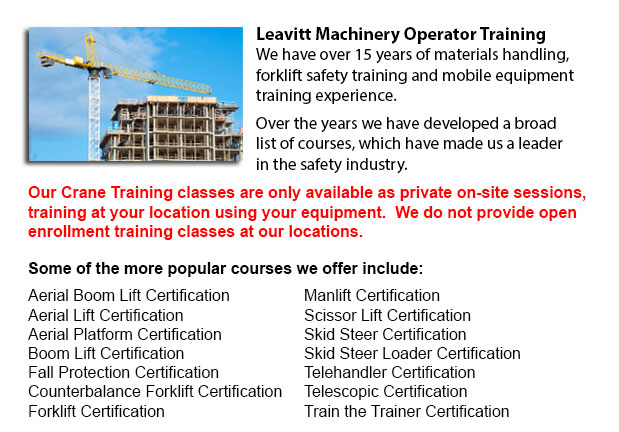
Kamloops Overhead Crane Training - An overhead crane is a large crane utilized to move and lift huge, heavy stuff that can't be moved manually. An overhead crane is usually fixed in position while in use. These equipment could be used in moving huge volumes of objects. Overhead cranes are commonly used within steel mills so as to handle the steel during the fabrication process. These cranes are seen at ports throughout the globe, moving things on and off ships.
These kinds of cranes are made to support a permanent beam or rail fixed on a support structure. Cranes are normally built right into another structure. Alternatively, a platform can be constructed to hold the beam in place. The fixed design of overhead cranes gives them great stability, that allows them to handle the very heavy loads necessary in heavy businesses like for instance steel and shipping. Various models of mobile overhead cranes are constructed to be pulled by large vehicles.
The controls of an overhead crane are accessed via a mechanism which is mounted on a trolley, running along the rail. The overhead crane is limited to running just back and forth. Materials are lowered and lifted utilizing a running rope or cable through the trolley-mounted device, and then horizontally moved along the rail. This back and forth motion is adequate. Like for example, at a port, a container ship is located next to the crane, and the crane operator sends the mechanism back and forth along the trolley to shuttle goods between a train or truck and the ship. Jib cranes are more flexible and have swinging booms for moving merchandise in many directions.
The history of the overhead crane started during the eighteen seventies, when some designs were developed for various uses. Smaller overhead crane models also exist for use in businesses where heavy materials should be lifted. A home workshop, like for instance, may require the use of an overhead crane to transport tools, lumber and finished products between the workshop and loading area. Regardless of the application, overhead cranes must only be operated by people who have obtained overhead crane training.
-
Kamloops Counterbalance Forklift Training
Kamloops Counterbalance Forklift Training - Counterbalance Forklift Training courses are always in high demand. The Counterbalance forklift is a forklift which is made with a weight which counters the balance, equally spreading the weight of the load... More -
Kamloops Manlift Certification
Kamloops Manlift Certification - The Manlifts and Elevated Platforms program offers training on the rules, regulations and proper application of safe operating measures and work practices included in daily activities for people who work making use of... More -
Kamloops Boom Lift Training
Kamloops Boom Lift Training - Elevated work platforms, likewise referred to as aerial platforms, allow workers to carry out tasks at heights that will otherwise be not reachable. There are various styles of lifts designed for different site applicati... More -
Operator Safety Certification | Re-Qualification Certification | In-House Instructor Certification in Kamloops
Forklifts are used in just about all industrial construction sites and in warehouse operations and in boat yards. The reach feature of a lift truck is a vital component used in several applications like for instance when a shelving system is being us... More -
Kamloops Manlift Safety Training
Kamloops Manlift Safety Training - It is essential for competent Manlift operators to be aware of the connected dangers that come with particular kinds of scissor lifts. They must be able to operate the scissor lift in a way that protects not only th... More -
Kamloops Crane Training Schools
Kamloops Crane Training Schools - We have designed several programs for Mobile Crane Operation at our Crane Training Schools. These programs are recommended for the experienced operator who requires certification or re-certification, and for inexperi... More -
Skid Steer Loader Certification in Kamloops
The engine powered skid-steer loader consists of a rigid and small frame, outfitted together with lift arms which could attach to a lot of industrial attachments and tools to perform several labor saving jobs. Typically, skid-steer loaders are four-w... More -
Kamloops Heavy Equipment License
Kamloops Heavy Equipment License - A heavy equipment license could be acquired by taking a certification and preparation course at a private training school or a vocational school. This license would qualify you to operate various types of heavy mach... More

Forklift Certification Kamloops
TOLL FREE: 1-888-254-6157
Kamloops, British Columbia
forkliftcertificationkamloops.com/
Email Us
About Us


